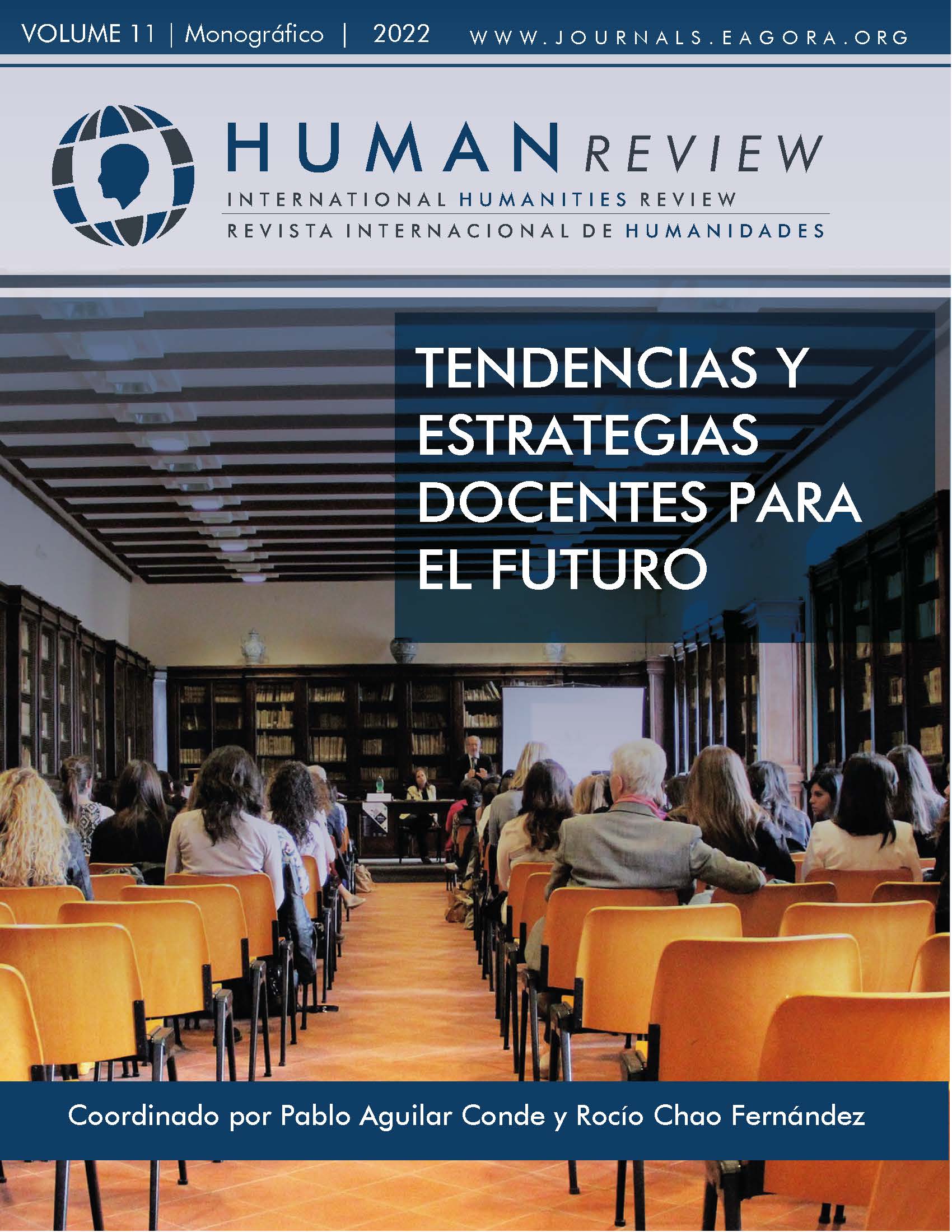Integration of language research software in university teaching
DOI:
https://doi.org/10.37467/revhuman.v11.3895Keywords:
Linguistics, Software, Research, Education, Teaching, Applications, Specific knowledgeAbstract
The use of specialized software, applications and programs has changed the way we do research, and therefore, the integration of these tools in the university courses is especially important. Thus, this paper presents two computer programs widely used in linguistic research and the methodology followed for their introduction in a specific course. Finally, the results obtained and the students’ degree of acceptance are discussed, leading to the final conclusions.
References
Area Moreira, M. (2012). La alfabetización en la sociedad digital. En M. Area Moreira, A. Gutiérrez Martín, y F. Vidal Fernández, Alfabetización digital y competencias informacionales (pp. 3-42). Ariel.
Boersma, P. (2001). Praat, a system for doing phonetics by computer. Glot International, 5(9–10), 341–345. https://www.fon.hum.uva.nl/paul/papers/speakUnspeakPraat_glot2001.pdf
Boersma, P. y Weenink, D. (2022). Praat: doing phonetics by computer. [Programa informático]. Versión 6.2.14. https://www.fon.hum.uva.nl/praat/
Correa Duarte, J. A. (2014). Manual de análisis acústico del habla con Praat. Instituto Caro y Cuervo.
Crystal, D. (1997). The Cambridge Encyclopedia of Language. Cambridge University Press.
Garayzábal Heinze, E., Jiménez Bernal, M. y Reigosa Riveiros, M. (coords.) (2014). Lingüística forense: la Lingüística en el ámbito Legal y Policial. Euphonia Ediciones.
Gibbons, J. (1999). Language and the Law. Annual Review of Applied Linguistics, 19, 156-173.
Gibbons, J. y Turell, M. T. (2008). Dimensions of Forensic Linguistics. John Benjamins.
Martínez Celdrán, E. (1998). Análisis espectrográfico de los sonidos del habla. Ariel.
NCH Software (2022). Express Scribe, software para transcripciones. [Programa informático]. Versión 11.08 https://www.nch.com.au/scribe/es/index.html
Ramírez Salado, M. (2017). Antecedentes de la lingüística forense: ¿desde cuándo se estudia el lenguaje como evidencia? Pragmalingüística, 25, 525-539.
Rueda-López, J. J. (2007). La tecnología en la sociedad del siglo XXI: albores de una nueva revolución industrial. Aposta. Revista de Ciencias Sociales, 32, 1-28.
Tamer, N. L., Suarez, S. B. y Morales, M. I. (2011). Las TICS en la Universidad: acercando brechas… acortando distancias. Investigación y docencia aplicadas a las ciencias básicas. Ciencia, Tecnología y Sociedad. La investigación orientada a problemas socialmente relevantes. XI Congreso Iberoamericano de Extensión Universitaria (22 al 25 de noviembre de 2011). Universidad Nacional del Litoral. https://www.unl.edu.ar/iberoextension/dvd/paginas/ponencias_mesa1_pag9.html
Tomàs, M., Feixas, M. y Marquès, P. (1999). La Universidad ante los retos que plantea la sociedad de la información. El papel de las tecnologías de la información y comunicación (TIC). En EDUTEC 99. IV Congreso de Nuevas Tecnologías de la Información y de la Comunicación para la educación. Nuevas tecnologías en la formación flexible y a distancia. Universidad de Sevilla. https://idus.us.es/handle/11441/63194
Downloads
Published
How to Cite
Issue
Section
License
Those authors who publish in this journal accept the following terms:
- Authors will keep the moral right of the work and they will transfer the commercial rights.
- After 1 year from publication, the work shall thereafter be open access online on our website, but will retain copyright.
- In the event that the authors wish to assign an Creative Commons (CC) license, they may request it by writing to publishing@eagora.org









